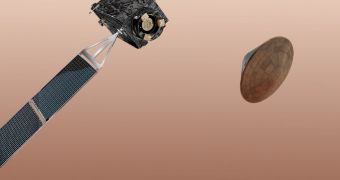European ministers proposed the ExoMars mission to the Red Planet back in 2005, and the European Space Agency (ESA) wanted to include NASA in it as well. Though the American space agency accepted at first, it now looks like it will retire from this ambitious scientific endeavor.
An official announcement has not yet been made, but is expected to come as soon as US President Barack Obama presents his 2013 Federal Budget Request. Funding for the American portion of ExoMars is very unlikely to be included.
Over the past year, NASA has retreated from a variety of missions it was supposed to conduct with ESA, such as the Laser Interferometer Space Antenna (LISA) and ExoMars. There are also doubts that the United States will cooperate with Europe for the Euclid mission to search for dark matter.
International collaboration in space has been significantly hampered lately, mostly because of the severe budget cuts that NASA has been subjected to. The agency simply cannot afford to subsidize private companies, build a new rocket and a space capsule, and cooperate with other agencies all at once.
ExoMars is supposed to be made up of a rover and an orbiter. NASA was supposed to provide the delivery system needed to carry the two to the Red Planet, plus an orbiter of its own. At this point, the fate of the endeavor is uncertain.
Some sources suggest that the budget the NASA Science Mission Directorate gets could be reduced by as much as 50 to 60 percent. The SMD is responsible for conducting all space exploration missions, including those to Mars, the Moon, and other planets, asteroids and moons in the solar system.
As the prospect of NASA dropping out of ExoMars is looming, ESA officials have already begun conducting talks with counterparts at the Russian Federal Space Agency (RosCosmos). The latter may take over for the American space agency, but with a series of limitations.
The most important one is that the Russians don't have the capability to land a 1-ton rover on the surface of the Red Planet. The ExoMars rover is almost as heavy as NASA's Mars Science Laboratory robot Curiosity, which is scheduled to arrive at Gale Crater this August.
At the same time, the rockets, components and scientific instruments the American agency was supposed to provide for ESA may no longer be available. Under these circumstances, Exomars may have to exceed its current, one-billion-Euro ($1.3-billion) cost cap.

 14 DAY TRIAL //
14 DAY TRIAL //